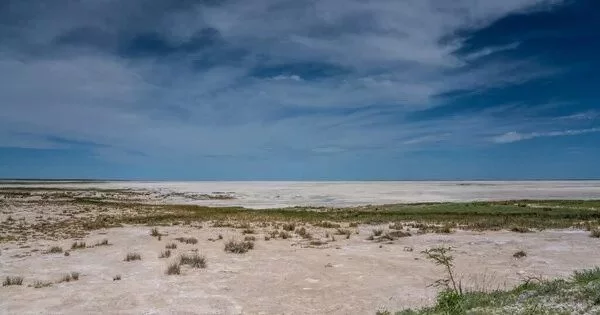Dryland salinity is a form of soil degradation caused by rising groundwater tables in dryland areas, leading to increased soil salinity and reduced productivity of agricultural land. It is often caused by land clearing and poor land management practices.
Dryland salinity, like wind erosion, is a natural process for soil. Salinity degrades land by increasing soil salt concentrations in the environment, watercourse, or soil in unirrigated landscapes, which are higher than normal soil salt concentrations in dryland regions. It is often caused by human activities such as land clearing and irrigation, which can increase the amount of water and salt entering the soil. Management approaches include reducing water use, planting salt-tolerant crops, and restoring natural vegetation.
It is a type of land degradation caused by the rising of salt levels in the soil due to a combination of factors such as land clearing, irrigation, and reduced vegetation cover. This phenomenon is mainly observed in arid and semi-arid regions and can have negative impacts on agriculture, water quality, and biodiversity.
Dryland salinity can also be caused by naturally saline soils, such as hypersaline clays, and is linked to sodic soils (soils with an exchangeable sodium percentage (ESP) of more than 6%).
Overview
Salinity refers to the movement and concentration of salt in the landscape, as well as the impact on land and water resources; dryland salinity refers to salinity in unirrigated landscapes. Salinity processes are driven by water budget imbalances caused primarily by agriculturally driven landscape change and extend from local to regional scales.
The accumulation of salts in the soil surface and groundwater in non-irrigated areas is known as drier salinity. It is typically the result of three distinct processes:
- groundwater recharge (or deep drainage)
- groundwater movement
- sgroundwater discharge.
It frequently results from the replacement of deep-rooted native vegetation with shallower-rooted crops and pastures that consume less water. Unused rainwater seeps into the ground, causing groundwater to rise and dissolve salts that have been stored deep in the soil.
Dryland salinity causes
Dryland salinity occurs when rising groundwater mobilizes and redistributes salt in the landscape closer to the soil surface and/or into waterways.
Because of increased leakage and groundwater recharge, the watertable rises in dryland agriculture. This happens when deep-rooted perennial species like native trees, shrubs, and pasture are replaced with shallow-rooted annual species and long fallows are included in a cropping rotation.
Salts found naturally in rocks and soil are dissolved and move toward the soil surface and into the root zone as the watertable rises. In clay soils, the salinity risk is greatest when the watertable is within three metres of the soil surface. As groundwater evaporates, salt that reaches the soil surface concentrates.
















